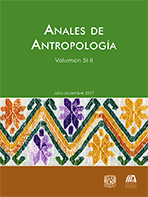Archaeology, ethnohistorical sources and rhetoric of legitimisation: A reflexive essay on OlmecasXicalancas
Main Article Content
Abstract
The ethnohistorical sources on Olmecas Xicalancas dating from the 16th, 17th and 18th centuries have frequently been used to explain culturalinteractions during the Epiclassic period (600 to 900 AD) in the central Mexican altiplano (Puebla-Tlaxcala) and especially with the Gulf Coastand the Mayan area. However, comparing these sources to each other, and then to some elements of the material culture of Cacaxtla-Xochitecatland Cholula seems to challenge the historical validity of these accounts. The purpose of this essay is to contribute to the ongoing examination ofthe relationship between ethnohistory and archaeology. Is there a consensus about the Olmecas Xicalancas people, where they came from, theirgeographical path, their temporality, linguistic and ethnic composition? Can we associate a material culture to this group? A systematic review ofavailable data leads to a critical analysis of the sources. Both the structure of the accounts and the inconsistencies with the archaeological evidencelead to the identification of a possible archetypical rhetoric of legitimisation.
Downloads
Article Details
Citas en Dimensions Service
Esta revista usa una licencia CC del tipo CC BY-NC-ND 3.0. Se maneja bajo el esquema de acceso abierto, con una licencia Creative Commons Attribution-NonCommercial-NoDerivs 3.0 Unported.
